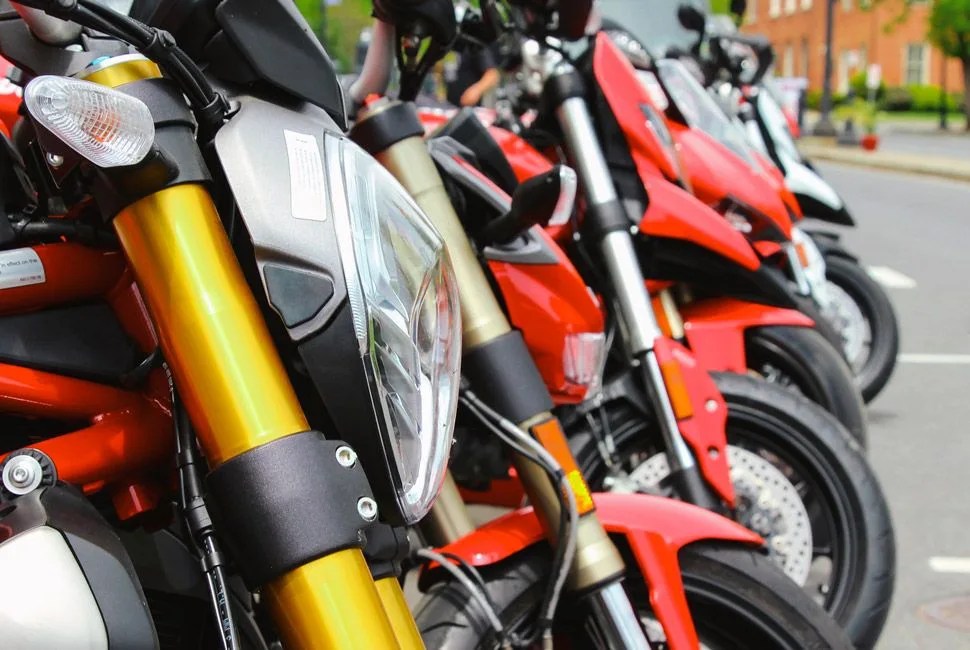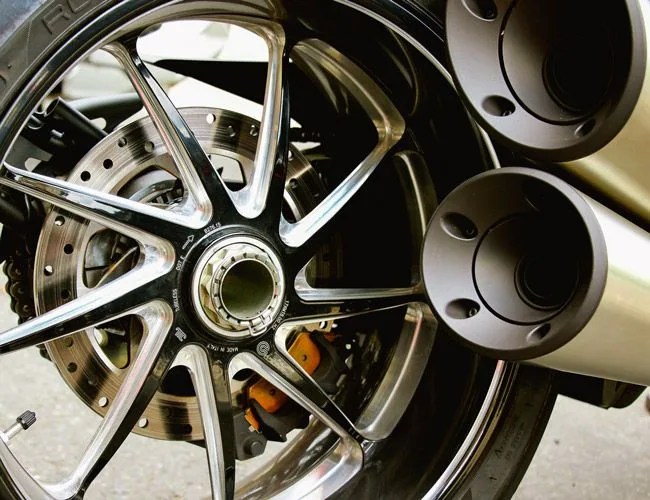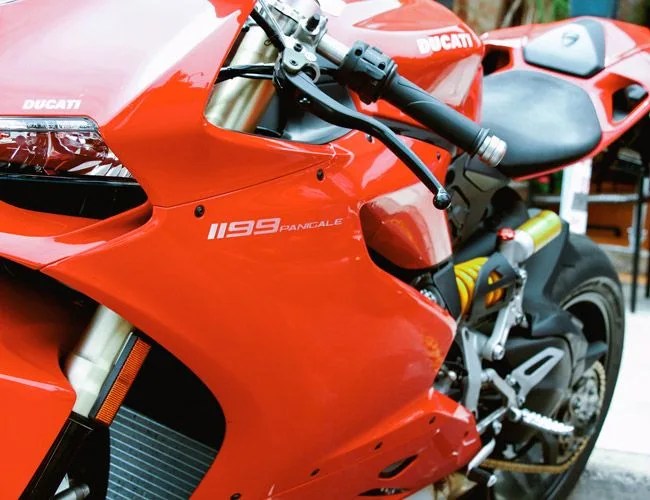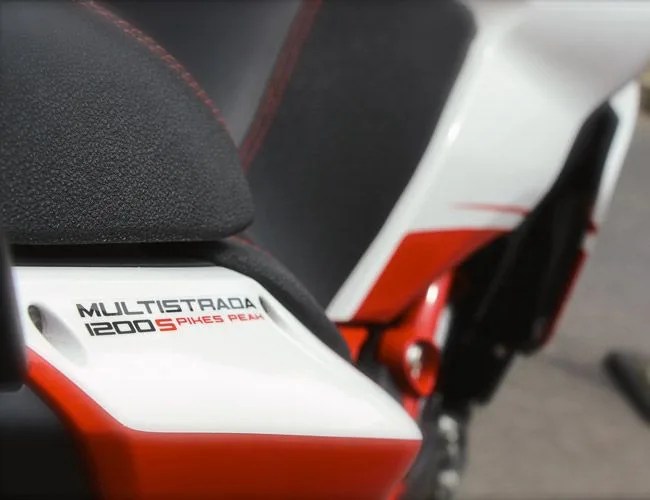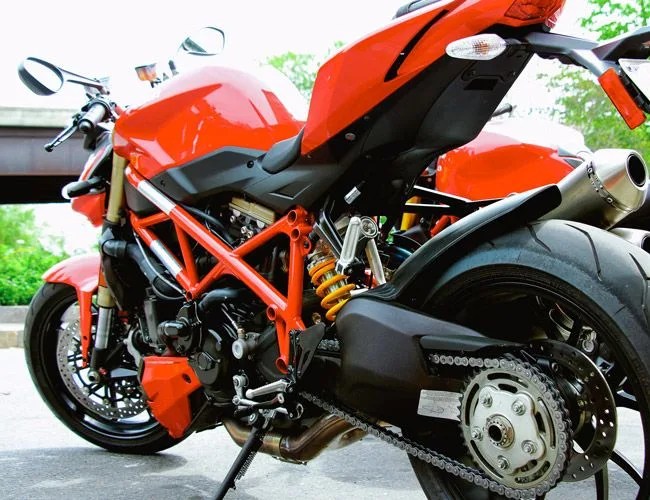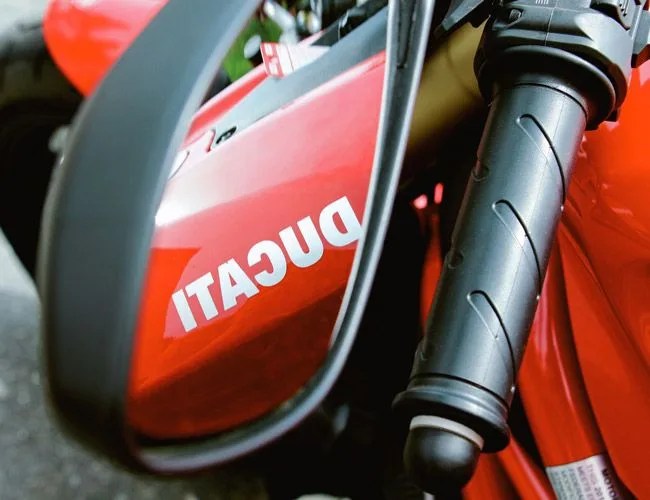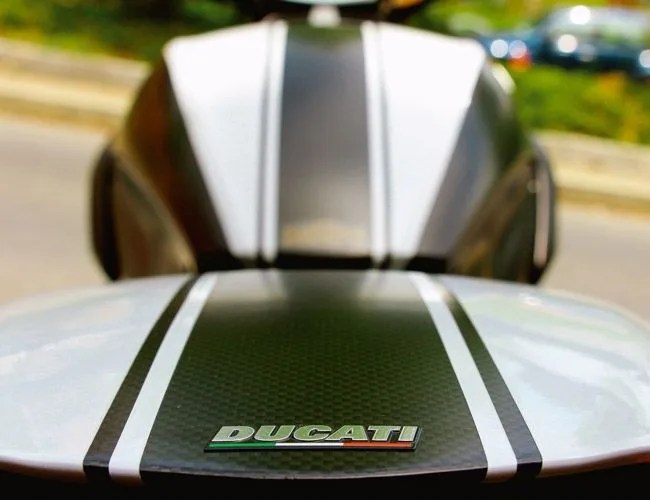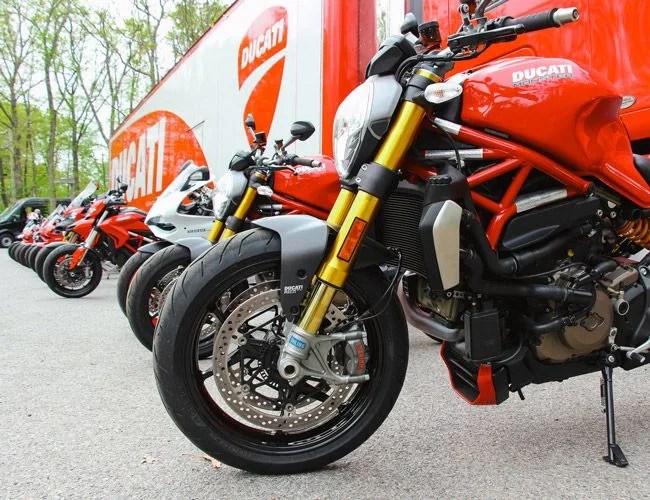When Ducati motorcycles was purchased by Audi’s division of the Volkswagen Automotive Group (VAG) in 2012, there was concern that the Italian company’s passion would be diluted by layers of corporate bureaucracy. The German conglomerate (VAG) was hellbent on becoming the world’s number one automaker and, despite Ducati’s incredible success both in showrooms and on podiums, it was unclear where the bike brand would fit in the four-wheeled company’s portfolio. Now two years into the relationship, the passion is stronger than ever. With free reign on development (and deeper pockets), Ducati’s built a lineup that’s billed as faster, sexier and more nimble than anything they’ve produced before. After spending a day piloting them through the Catskill Mountains, it became clear that this may be their finest vintage yet, at least for the majority of their models.
OTHER GREAT BIKES: Star Motorcycles Bolt R Spec | Ducati Panigale 1199 | Ural Motorcycles
Our day in the saddle began astride the Multistrada S Pikes Peak ($22,495+). The consumer version of the four-time mountain race winner, the Pikes Peak is Ducati’s top-of-the-line answer to the fastest growing segment in motorcycling: adventure bikes. While the competition from Germany, Japan and Austria boast better off-road prowess and overland potential, Ducati dialled this beast in to excel on the tarmac, where most riders will actually spend their time; this sacrifices its prowess on knobbies, but its 150 hp Testastretta 11, L-Twin motor makes it an absolute blast on mountainous roads. Its upright riding position and wide bars provide all-day comfort while Ducati’s shift-on-the-fly power modes make tailoring the power-band to conditions (and rider confidence) a breeze.
Getting in the saddle of the Panigale, blipping the throttle and waiting for other riders ahead to clear felt like watching Scarlett Johansson disrobe.
The iconic Monster, in 1200 S ($15,995+) trim, uses that same brilliant engine and software but, packaged as it is, doles out a much more aggressive riding experience. Ripping through the winding asphalt of the Catskills the Monster came alive, barking during downshifts and delivering one of the most engaging rides of the day — when given the choice, this was the bike we came back to for seconds. The minimalist approach of the Monster’s design, combined with top-shelf componentry from Ohlins and Brembo, provides rider feedback in droves. The rear brakes did feel a little vague, but with engine’s 12.5:1 compression ratio, rolling off the Ride-by-Wire throttle made them superfluous when it came to negotiating the twisties.
Then came the 1199 Panigale ($18,995+), a bike with heaping gobs of power and a taut suspension aimed toward the track; it’s an intimidating ride. Getting in the saddle, blipping the throttle (safe to say its 195 horses are not very tame) and waiting for other riders ahead to clear felt like watching Scarlett Johansson disrobe. Slowly. Throttle response is instantaneous, the ergonomics scream “checkered flag” and its exhaust note is addictive — but the Panigale rides like an infinitely civilized machine. It builds speed like a bullet, sure, but never once did it feel twitchy, on edge or beyond our control. What’s truly scary is how rideable and confidence-inspiring the Panigale was.
7 photos
